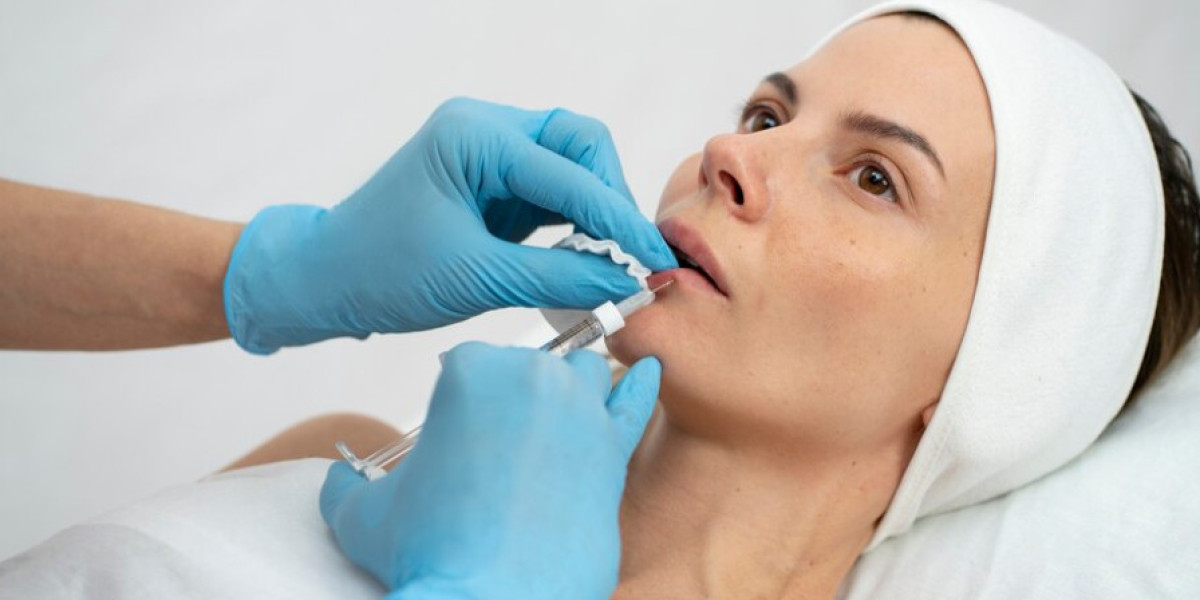Introduction
In the world of aesthetic medicine, skin fillers have gained immense popularity for their ability to rejuvenate the skin, enhance facial contours, and reduce the appearance of wrinkles. This non-surgical treatment offers a versatile solution for those looking to achieve a more youthful and refreshed appearance without the downtime associated with surgical procedures. In this comprehensive guide, we will delve into everything you need to know about skin fillers, including their benefits, types, risks, and what to expect during and after treatment.
What Are Skin Fillers?
Skin fillers, also known as dermal fillers, are injectable substances used to add volume, smooth out wrinkles, and enhance facial features. They work by filling in areas where there is a loss of volume or deep folds, effectively reducing the signs of aging and providing a more youthful appearance. These fillers can be composed of various materials, each offering unique properties and benefits.
Benefits of Skin Fillers
1. Non-Surgical Solution
One of the most significant advantages of skin fillers is that they offer a non-surgical alternative to facial rejuvenation. Unlike facelifts or other surgical procedures, skin fillers require no incisions, general anesthesia, or extensive recovery periods. This makes them an attractive option for those seeking subtle enhancements with minimal downtime.
2. Immediate Results
Skin fillers provide almost instant results. Patients can see a noticeable improvement in their appearance immediately after the procedure. This immediate gratification is one of the key reasons why skin fillers are so popular among individuals looking for quick and effective aesthetic enhancements.
3. Versatility
Skin fillers can be used to address a wide range of cosmetic concerns. They can add volume to hollow cheeks, smooth out nasolabial folds, plump up thin lips, and even improve the appearance of scars. This versatility makes them suitable for individuals with various aesthetic goals.
4. Customizable Treatments
Each individual's facial structure and aesthetic goals are unique. Skin fillers can be customized to meet specific needs, allowing for personalized treatment plans. A skilled practitioner can tailor the type and amount of filler used to achieve the desired results, ensuring a natural and harmonious appearance.
5. Gradual and Subtle Enhancements
Unlike more invasive procedures, skin fillers offer gradual and subtle enhancements. This means that changes can be made incrementally, allowing patients to maintain their natural look while achieving their desired improvements. This subtlety is often appreciated by those who prefer not to undergo dramatic transformations.
Types of Skin Fillers
There are several types of skin fillers available, each with its own unique properties and applications. Understanding the different types can help individuals make informed decisions about the most suitable option for their needs.
1. Hyaluronic Acid Fillers
Hyaluronic acid (HA) fillers are among the most popular and widely used dermal fillers. Hyaluronic acid is a naturally occurring substance in the body that helps maintain skin hydration and volume. HA fillers are known for their ability to provide natural-looking results and their reversibility, making them a safe and effective choice for many patients.
Common Brands: Juvederm, Restylane, Belotero
Uses: Lip augmentation, wrinkle reduction, cheek enhancement, under-eye hollows
2. Calcium Hydroxylapatite Fillers
Calcium hydroxylapatite (CaHA) fillers are composed of tiny calcium particles suspended in a gel-like solution. These fillers provide both immediate volume and long-term collagen stimulation, making them ideal for deeper wrinkles and facial contouring.
Common Brands: Radiesse
Uses: Nasolabial folds, marionette lines, cheek augmentation, hand rejuvenation
3. Poly-L-Lactic Acid Fillers
Poly-L-lactic acid (PLLA) fillers work by stimulating the body's natural collagen production over time. Unlike other fillers that provide immediate volume, PLLA fillers gradually improve skin texture and firmness, making them suitable for long-term rejuvenation.
Common Brands: Sculptra
Uses: Facial volume loss, fine lines, wrinkles, overall skin tightening
4. Polymethyl Methacrylate Fillers
Polymethyl methacrylate (PMMA) fillers consist of tiny microspheres suspended in a collagen gel. These microspheres provide immediate volume while also promoting collagen growth over time. PMMA fillers are considered semi-permanent, offering longer-lasting results compared to other fillers.
Common Brands: Bellafill
Uses: Deep wrinkles, acne scars, facial contouring
5. Autologous Fat Injections
Autologous fat injections, also known as fat grafting or fat transfer, involve harvesting fat from one part of the patient's body (typically the abdomen or thighs) and injecting it into areas that require volume enhancement. This natural filler option is highly biocompatible and offers long-lasting results.
Uses: Cheek augmentation, lip enhancement, facial volume restoration
The Procedure
Consultation and Assessment
The first step in the skin filler process is a consultation with a qualified practitioner. During this consultation, the practitioner will assess the patient's facial structure, discuss their aesthetic goals, and determine the most suitable type of filler and treatment plan. This is also an opportunity for patients to ask questions and address any concerns they may have.
Preparation
On the day of the procedure, the treatment area will be thoroughly cleaned, and a topical anesthetic or numbing cream may be applied to minimize discomfort. In some cases, a local anesthetic injection may be used.
Injection
The filler is then carefully injected into the targeted areas using a fine needle or cannula. The practitioner will use precise techniques to ensure even distribution and natural-looking results. The entire procedure typically takes between 15 to 60 minutes, depending on the number of areas being treated.
Post-Treatment Care
After the procedure, patients may experience mild swelling, redness, or bruising at the injection sites. These side effects are usually temporary and subside within a few days. Applying ice packs and avoiding strenuous activities can help minimize swelling and discomfort.
Risks and Considerations
While skin fillers are generally safe and well-tolerated, it is essential to be aware of potential risks and considerations associated with the procedure.
1. Allergic Reactions
Although rare, allergic reactions to the filler material can occur. Patients with a history of severe allergies or sensitivities should discuss this with their practitioner before undergoing treatment.
2. Infection
As with any injectable procedure, there is a slight risk of infection. Ensuring that the procedure is performed by a qualified and experienced practitioner in a sterile environment can significantly reduce this risk.
3. Bruising and Swelling
Mild bruising and swelling are common side effects that usually resolve within a few days. Patients can minimize these effects by avoiding blood-thinning medications and supplements before the procedure and following post-treatment care instructions.
4. Asymmetry
In some cases, asymmetry or uneven results may occur. This can often be corrected with additional filler or adjustments made during a follow-up appointment.
5. Granulomas
Granulomas are small, localized nodules that can form as a reaction to the filler material. They are rare but can be treated with corticosteroid injections or surgical removal if necessary.
6. Migration
In rare instances, the filler may migrate from the injection site, leading to lumps or uneven results. This can often be corrected with additional treatments or, in some cases, by dissolving the filler.
Choosing the Right Practitioner
Selecting a qualified and experienced practitioner is crucial to achieving safe and satisfactory results with skin fillers. Here are some tips for choosing the right provider:
1. Check Credentials
Ensure that the practitioner is board-certified in dermatology, plastic surgery, or a related field. Verify their credentials and training in cosmetic procedures.
2. Review Before-and-After Photos
Ask to see before-and-after photos of previous patients to assess the practitioner's skill and experience. This can give you an idea of the results you can expect.
3. Read Reviews and Testimonials
Look for reviews and testimonials from previous patients to gauge their satisfaction with the practitioner's services. Positive feedback and recommendations can provide valuable insights.
4. Schedule a Consultation
A consultation is an opportunity to discuss your goals, ask questions, and evaluate the practitioner's communication and approach. Choose a practitioner who takes the time to understand your needs and offers personalized recommendations.
Conclusion
Skin fillers have revolutionized the field of cosmetic dermatology by offering a non-surgical solution for facial rejuvenation and enhancement. With their ability to provide immediate and customizable results, it’s no wonder they have become a popular choice for individuals seeking to improve their appearance. By understanding the different types of fillers, their benefits, and potential risks, you can make an informed decision and achieve the youthful, refreshed look you desire.



